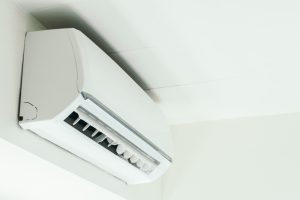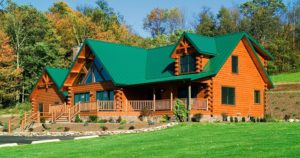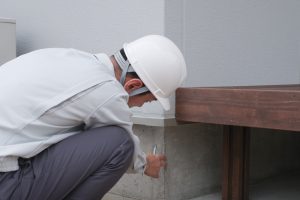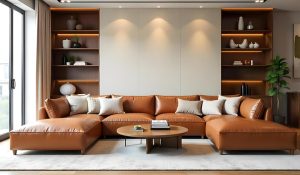5 Construction Tips from around the World for Temperature-Controlled Indoors

In recent years, people around the world have become more cognizant of energy efficiency in their homes. Part of this awareness is people becoming educated about controlling indoor temperatures.
Temperature-controlled indoors provide multiple benefits to a home’s residents. Homeowners are able to enjoy comfortable living, along with saving energy and financial resources. Most people add certain technological systems and devices to their homes for this purpose. For example, thermostats that control the function of home appliances. Another example is blackout curtains and blinds that keep excessive heat and light from entering the home.
While these are good methods for temperature control, it is a much better solution to construct and design homes appropriately. Various home construction and design elements play an important role in establishing thermal comfort in homes.
What is Thermal Comfort?
When talking about temperature-controlled indoors, it is important to define the term ‘thermal comfort’.
Different countries around the world have their own standards or building codes to maintain comfortable indoor temperatures. But the aim is not to eliminate discomfort but minimise it. The reason is the subjectivity of thermal comfort.
Thermal comfort is the mind’s condition when it feels comfortable within a thermal environment. Obviously, this leaves the scenario to subjective evaluation. Therefore, there is no particular thermal condition that meets the comfort requirements of all individuals.
This is another reason why home design and construction is a more feasible solution since people can customise these with more freedom.
Factors Affecting Indoor Temperature Control
Indoor temperature control is a highly technical process. The more you want to minimise your discomfort, the more you should take into account the different factors that affect indoor temperature.
Apart from personal sensitivity to a thermal environment, there are three major factors that impact thermal comfort. These are:
- Convection
- Conduction
- Radiation
Convection is the transfer of energy through air. The temperature of the air itself and rate of ventilation automatically affect how cold or hot a person feels in an enclosed area.
Conduction, as the name suggests, is the transfer of energy through contact with objects around the humans. In any given home, one comes into contact with several items. For example, the furniture and other such furnishings. Imagine feeling reasonably cool, but when you lay down for the night, your bed is too warm, and makes for an uncomfortable sleep.
Lastly, radiation is the energy that different surfaces around the home possess, and transfer it into the atmosphere. For example, home appliances run on electricity or gas, therefore, have the ability to affect indoor temperature.
Home Construction & Design Tips to Regulate Indoor Temperatures
We have already discussed that thermal comfort is a subjective concept. When constructing and designing your home, you must incorporate the local standards (for safety and avoiding any legal implications). But you must remember that these may not always meet your particular demands for comfort.
Therefore, you should discuss your particular temperature control requirements with your hired architect and engineer. For example, you might want uniform temperature across the entire home, or prefer to control temperatures in some zones more than others.
Meanwhile, here are a few tips for home construction and design that can actually help make difference in controlling indoor temperatures:
House Orientation
One of the very first things to consider during new home construction is the orientation of its structure. Depending on what kind of weather you mostly experience in your country, the architect can decide the best orientation to benefit from the natural environment.
If you live in warmer climates, it is preferable to have major windows facing either north or south. This will save you from the harshness of sun when it rises and sets. Although, it is possible that you may not get such a permit. Even in such cases, expert architects can come up with alternative solutions.
Home Insulation
Heat and cold can easily absorb into your interiors through the walls and roofs. To avoid this problem, experts suggest home insulation. You may have the best HVAC system and home appliances working to improve indoor temperature as per your needs, but it won’t be optimum if there is loss of heat or cool air.
Home insulation enhances the function of your HVAC system by sealing any areas that pose the threat of leakage. In a similar manner, one can install reflective roofs. The trick is that the roof should not only be reflective but have low emissivity too. So not only the roof keeps the outdoor heat away, but produces none of its own either.
Preventing Moisture
Moisture in the home’s walls can give rise to humidity. So when you are constructing a new home, ensure that the walls won’t become a victim of seepage. And if your existing home has this problem, then eliminate the root cause to resolve the problem entirely.
Certain parts of your home are bound to produce moisture; such as the kitchen and bathrooms. Here, you should install exhaust fans to keep these rooms as dry as possible.
Installing Ceiling Fans
In many countries, people don’t prefer installing ceiling fans. They would rather completely depend on air conditioning. However, ceiling fans keep air moving, which makes a person feel comfortable even in fairly warmer temperatures. These fans actually encourage evaporation from our skin so that a person may naturally feel cooler.
In many South East Asian countries, like Pakistan and India, ceiling fans are quite common in homes. The weather is warmer most of the year, and these fans help minimise use of cooling home appliances. (You can actually view homes listed on websites like Prop.pk that feature ceiling fans; often in stylistic variety).
Seasonally Adjustable Homes
In many countries, people experience all four seasons throughout the year. This means that levels of thermal comfort may vary according to the season. So even if your home is adapted to a season lasting the longest in your region, the design should be adjustable to changes. For example, you might want high ventilation for the summer, but in winters, you should be able to close such openings.
Your home’s construction and design can play a significant role for comfortable living. Even with thermal comfort’s subjectivity, several customised factors can further reduce temperature inconveniences. And of course, you must remember that it is not just a matter of personal comfort. Temperature-controlled homes also indicate the acceptance of social responsibility towards our earth.






